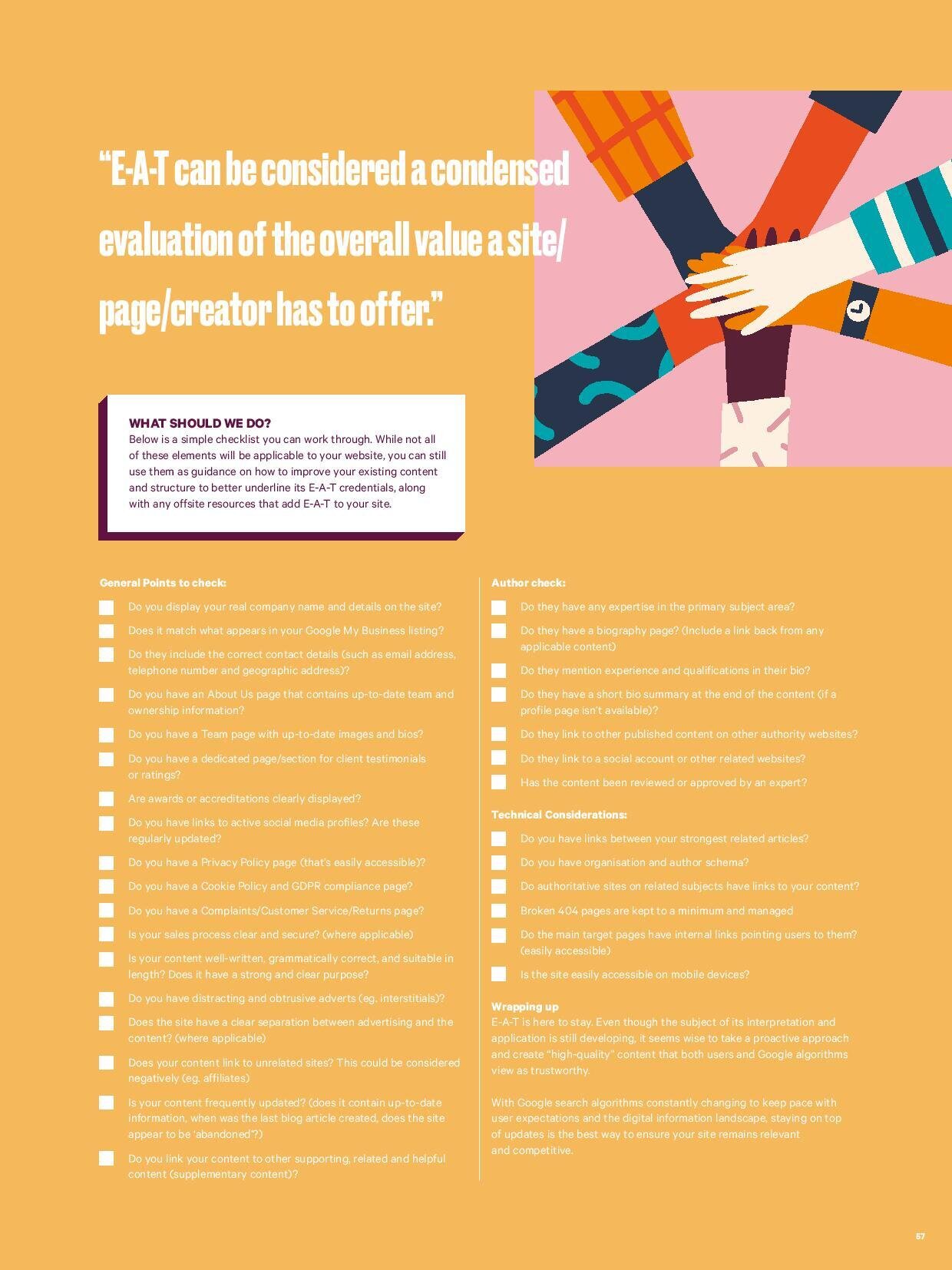Despite not having anything to do with food consumption, this delicious acronym is set to be all the rage in everybody’s 2020 digital diet. Resident Google-whisperer Chris Tanti dishes on the key things you need to know about E-A-T:
What is E-A-T?
Google uses the acronym E-A-T to refer to Expertise, Authority and Trust – the three key points on which Google rates content and content creators. But, why is this important?
As part of its increasing effort to improve the quality of results, Google is targeting certain sectors which it considers high risk. If your company falls into one of these sectors, we recommend you take immediate action and look into improving your perceived trust level (more on that below).
A short history
In November 2015 Google made the unprecedented decision to release a 160+ page document called the Search Quality Raters Guideline. This move was prompted by search engine marketing news aggregator SEMPost, who leaked and analysed a copy of the guide.
Despite having access to the highlight condensed 2013 version of the document, which featured the term E-A-T, the 2015 Guideline gave digital marketers a rare detailed glimpse behind the curtain. Unsurprisingly, the document was quickly analysed and used as the basis for new strategies and best practices.
Google now releases relatively frequent updates to this document, the last one being on December 5th 2019 (as of the time of writing).
How does Google use the Quality Raters Guideline?
Google uses this document to assess the accuracy and quality of search results during experimental algorithmic changes. Large teams (of possibly thousands) of quality reviewers use the Guideline to manually test a wide variety of websites in specific niches. They then report and benchmark the results, so Google can adjust the algorithms (if necessary).
One of the most intriguing tools referenced in the document is E-A-T. According to the guidelines, it serves as Google’s criteria for measuring the extent to which a website or specific page offers Expertise, Authority and Trust. (How can we tell it’s important? It is mentioned over 130 times in
the document!)
Google instructs its evaluators to consider:
• The expertise of the creator of the main content.
• The authoritativeness of the creator of the main content, the main content itself, and the website.
• The trustworthiness of the creator of the main content, the main content itself, and the website.
Does this affect Google rankings?
Google recently confirmed in its Webmaster Central Blog that E-A-T has played a major role in its last few updates, which were focused on so- called Y-M-Y-L (your money your life) websites where expertise, authority and trust are paramount.
E-A-T in detail
E-A-T can be considered a condensed evaluation of the overall value a site/page/creator has to offer.
Much more than a single ranking signal or score, E-A-T is likely a collection of micro algorithms which, when combined, can be considered E-A-T. Google’s algorithms probably look at both on and off-site elements, evaluating signals associated with good and bad E-A-T results, and judging value by assessing a site as close to the way a human would as currently possible.
Not all websites require a high level of confirmed E-A-T. While medical and financial sites certainly would, a website about hobbies needs much less formal expertise. Ecommerce sites should always take E-A-T into account, regardless of their niche or the value of their products. Google always regards online shopping sites as Y-M-Y-L because of the risk associated with any monetary transactions.
The purpose of E-A-T is clear – it’s a tool designed to help Google improve its results for Y-M-Y-L sites and services. What remains poorly defined is the hard measurability of E-A-T. After all, how does one measure expertise or reputation?
The E.A.T checklist
Below is a simple checklist you can work through. While not all of these elements will be applicable to your website, you can still use them as guidance on how to improve your existing content and structure to better underline its E-A-T credentials, along with any offsite resources that add E-A-T to your site.
